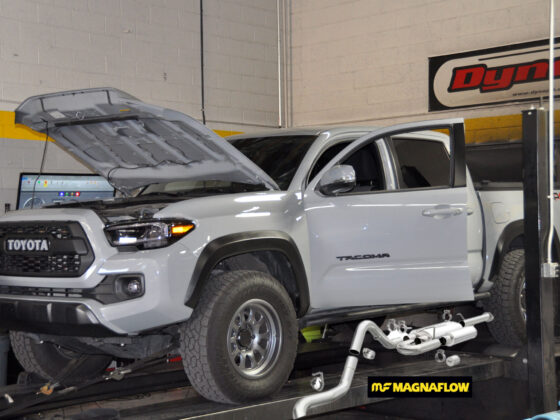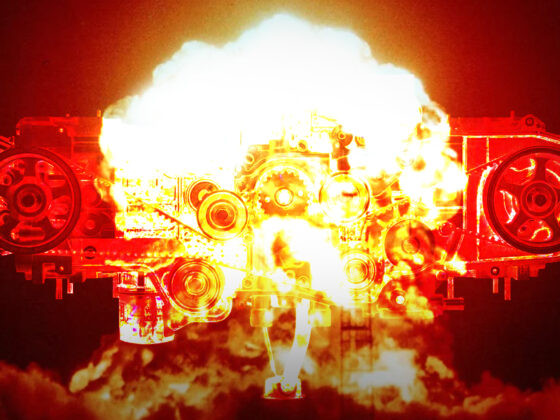It’s been a minute since I last went to the LA Auto Show and wrote about it. COVID shut the show down for a bit and I was too busy last year to do a write-up. The LA Auto Show doesn’t have as many OEMs exhibiting as it did before COVID and maybe we don’t see it ever recover. The German brands of Audi, BMW, and Mercedes may not come back for a while. Mazda and Polestar decided not to show up this year. Who knows when, or if, auto shows will recover back to pre-COVID levels. Anyway, I apologize ahead of time for the crappy pictures; it’s been so long since I took pictures of show cars, I forgot to clean my camera lens. Being honest though, I never really clean the lens.
 I do have to say I am a bit disappointed to not see a diffuser on the Z06; I would have thought the mid-engine layout would have left space for a nice diffuser. This Z06 had the carbon package on it. Maybe the most important use of carbon bits are the wheels to reduce the rotating mass and increase stiffness. Billy Johnson wrote a great article on carbon wheels a while back.
I do have to say I am a bit disappointed to not see a diffuser on the Z06; I would have thought the mid-engine layout would have left space for a nice diffuser. This Z06 had the carbon package on it. Maybe the most important use of carbon bits are the wheels to reduce the rotating mass and increase stiffness. Billy Johnson wrote a great article on carbon wheels a while back.
 Chevy learned from a prior mistake of making a Z06 that overheated on track. I think it was the C6 generation. This C8 has massive surface area for many heat exchangers to keep the vitals cool enough for sustained track use. These front bumper corner openings remind me of GT2RS size, which is to say, much bigger than the pedestrian Carrera. Then the Corvette has the massive side openings too for more cooling. Personally, I don’t care much for how the base C8 Corvette looks, but the Z06 adds enough muscular details to make it look good in my opinion.
Chevy learned from a prior mistake of making a Z06 that overheated on track. I think it was the C6 generation. This C8 has massive surface area for many heat exchangers to keep the vitals cool enough for sustained track use. These front bumper corner openings remind me of GT2RS size, which is to say, much bigger than the pedestrian Carrera. Then the Corvette has the massive side openings too for more cooling. Personally, I don’t care much for how the base C8 Corvette looks, but the Z06 adds enough muscular details to make it look good in my opinion.
 The LT6 engine GM engineered for the Z06 is something else. If I recall the story correctly, they took apart a Ferrari 458 engine, learned from it, and made this beast of a naturally aspirated engine that is also the foundation for the C8.R racecar. I would say the LT6 is the most badass mass-produced naturally aspirated engine for a car. The only engine that I am aware of that is more insane is that Cosworth lump going into the Gordan Murray Automotive T.50, but there will only be 100 of those cars made with each costing a few million dollars each. Anyway, for the LT6 to be track-worthy, it has a serious dry sump system. That oil dipstick has a long way and curvy way to go to get down to the oil in the tank.
The LT6 engine GM engineered for the Z06 is something else. If I recall the story correctly, they took apart a Ferrari 458 engine, learned from it, and made this beast of a naturally aspirated engine that is also the foundation for the C8.R racecar. I would say the LT6 is the most badass mass-produced naturally aspirated engine for a car. The only engine that I am aware of that is more insane is that Cosworth lump going into the Gordan Murray Automotive T.50, but there will only be 100 of those cars made with each costing a few million dollars each. Anyway, for the LT6 to be track-worthy, it has a serious dry sump system. That oil dipstick has a long way and curvy way to go to get down to the oil in the tank.
 Aside from the hp/liter the LT6 is able to generate, what impresses me more is the nearly flat torque curve from 3500rpm all the way to the 8600rpm redline. Having a flat torque curve that wide is very difficult to do on a naturally aspirated engine. A couple features you can see here that allow for that flat torque curve are the tubular tri-Y headers and the valves between the two plenums forming the intake manifold assembly. To get a really flat torque curve, some type of resonance tuning is required on the intake side which is what those valves between the plenums do. What you can’t see here is cam phasing which is another part of the puzzle required to get a fat torque curve.
Aside from the hp/liter the LT6 is able to generate, what impresses me more is the nearly flat torque curve from 3500rpm all the way to the 8600rpm redline. Having a flat torque curve that wide is very difficult to do on a naturally aspirated engine. A couple features you can see here that allow for that flat torque curve are the tubular tri-Y headers and the valves between the two plenums forming the intake manifold assembly. To get a really flat torque curve, some type of resonance tuning is required on the intake side which is what those valves between the plenums do. What you can’t see here is cam phasing which is another part of the puzzle required to get a fat torque curve.




10 comments
Dang, I was hoping to see to coaxial turbine turbo trickle down to the IC market before things went Full ICE.
Oops, I meant Full EV.
I’m curious to see if/when more e-turbo makes it onto cars. Mercedes has a Garrett e-turbo on one of their AMG cars. Genesis has a 48V electric supercharger and e-turbo uses the same 48V. With more cars coming hybrid like all the new super cars from Ferrari and McLaren, one logical step is e-turbo. Conversely, they could just say the electric motor does the torque filling.
Yeah, we have probably hit ‘Peak Turbo’ in our civilization, but I was kind of hoping to see the development of these turbos stretched out a bit more.
“The amount of turbocharger lag plays a key role in the driver’s perceived quality of a passenger vehicle’s engine response. This paper investigates an alternative method to the conventional design of a turbocharger turbine to improve the transient response of a passenger vehicle. The investigation utilises the Ford Eco-Boost 1.6 L petrol engine, an established production engine, equipped with a turbocharger of similar performance to the GT1548 produced by Honeywell. The commercially available Ricardo WAVE was used to model the engine. Comparing the steady-state performance showed that the axial turbine provides higher efficiencies at all operating conditions of an engine. The transient case demonstrated an improved transient response at all operating conditions of the engine. The study concluded that, by designing a similar sized axial turbine, the mass moment of inertia can be reduced by 12.64% and transient response can be improved on average by 11.76%, with a maximum of 21.05% improvement. This study provides encouragement for the wider application of this turbine type to vehicles operating on dynamic driving cycles such as passenger vehicles, light commercial vehicles, and certain off-road applications.”
https://www.mdpi.com/2076-3417/10/21/7452
Bummer this turbo didn’t make it into serial production. I wrote about it a while ago. https://motoiq.com/the-secret-turbo-in-the-ring-slaying-porsche-919-evo-honeywell-garrett-dualboost-for-gasoline-turbocharger/
Yeah, that’s the turbo!
“The amount of turbocharger lag plays a key role in the driver’s perceived quality of a passenger vehicle’s engine response. This paper investigates an alternative method to the conventional design of a turbocharger turbine to improve the transient response of a passenger vehicle. The investigation utilises the Ford Eco-Boost 1.6 L petrol engine, an established production engine, equipped with a turbocharger of similar performance to the GT1548 produced by Honeywell. The commercially available Ricardo WAVE was used to model the engine. Comparing the steady-state performance showed that the axial turbine provides higher efficiencies at all operating conditions of an engine. The transient case demonstrated an improved transient response at all operating conditions of the engine. The study concluded that, by designing a similar sized axial turbine, the mass moment of inertia can be reduced by 12.64% and transient response can be improved on average by 11.76%, with a maximum of 21.05% improvement. This study provides encouragement for the wider application of this turbine type to vehicles operating on dynamic driving cycles such as passenger vehicles, light commercial vehicles, and certain off-road applications.”
https://www.mdpi.com/2076-3417/10/21/7452
So true…there’s a snail shell design for maximum vortex compound combustion…but, that’s kinda secret, for now.
1. The GTD rear suspension looks to be based on the GT500 rear. Probably tweaked a bit and converted to inbound dampers. Lower arm looks very chunky, probably just a prototype still.
The front is very interesting. Based on other photos i have found online, the vertical height difference between the multilink lower “arm” pivot points looks to be over 2 inches.
The exhaust tips are probably very thin wall titanium, as they are made by Akrapovic.
2. The LT6 is impressive, the bore/stroke ratio is even greater than that of the 458.
And the design of the Z06 is what the C8 should have been from the start.
3. That WRX thing is hideous, oh my god.
Appreciate the comments! 3. To be fair, the WRX has never been a looker, ha!
Nothing says Nissan fanboy like a Nismo bathrobe. Nothing makes you look like more of a weirdo than a Nismo bathrobe. I’d rock one!